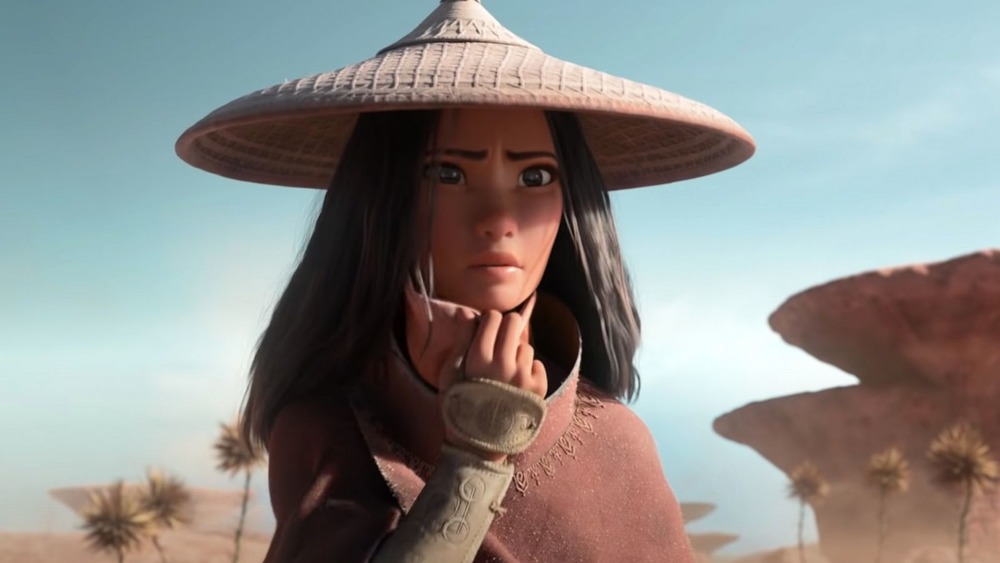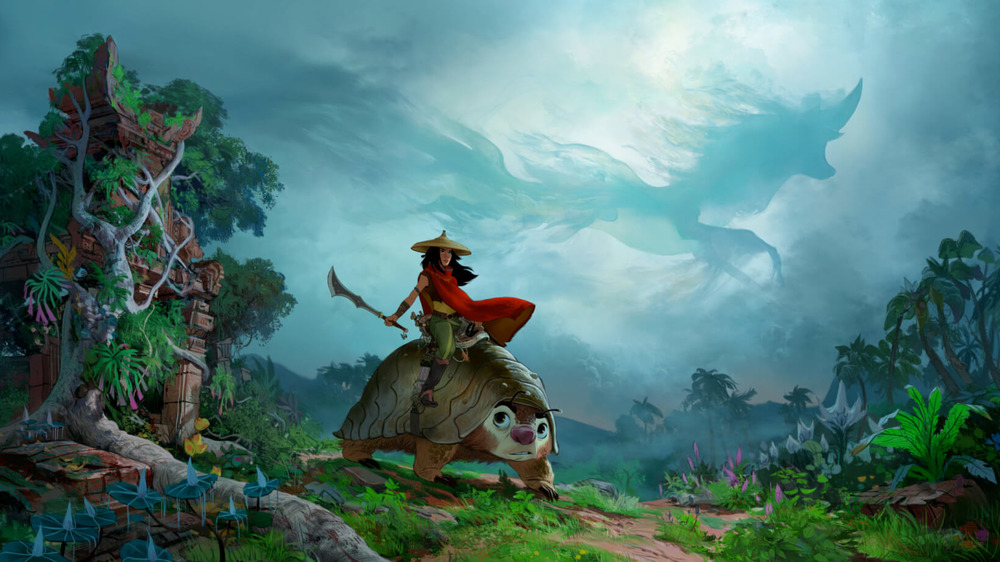Why Raya And The Last Dragon's Disney+ Release Is More Important Than You Think
We're all wondering about the ways life will continue to change in the next stages of the pandemic, and perhaps even more so about the permanent effects that will linger in a post-pandemic world. Disney CEO Bob Chapek hinted at an unlikely oracle during the Disney Investor Day event on Thursday, December 10.
In terms of venturing into the world of post-pandemic entertainment consumption, in many ways, Raya and the Last Dragon is the first of its kind. Already groundbreaking as the first film inspired by Southeast Asia, it will be among the first 2021 films released directly on Disney+ simultaneously with whatever theatrical reach is feasible at the time of March 5, 2021. Disney announced that at least 15 all-new features and a slew of series from Disney, Pixar, Star Wars, and even Marvel would follow the direct-to-streaming model over the next few years, so keep an eye on the small screen for some of the films you've been looking forward to.
In a day overflowing with entertainment news, it's easy to miss the immense implications of what Chapek is suggesting. Potentially, Raya and the Last Dragon marks the point at which studio release strategies transition from adaptable engines shaped by the demands of the pandemic to instruments that shape audience demands themselves. Various levels of at-home, on-demand, premium-premiere formats may become more the norm long after the urgency of "necessity" due to social distancing fades.
More of a social indicator than your average streaming release
Though the scope is expanded, the new tactic is not unprecedented. The studio previously made the bold decision to pull the live-action Mulan from its initial March 2020 release, bypassing theaters and premiering the film on Disney+ Premier Access in September for a fee of $29.99, the same premium subscribers will have to pay to see Raya ahead of everyone else. There are many different models the service might experiment with as an alternative to theatrical release — such as that utilized for Pixar's Soul, set to be released on Disney+ on December 25, but without the Premier fee. Warner Bros. announced a similar VOD-theater-hybrid approach for its 2021 film docket last week.
Even if this new strategy only amounts to a modest shift in the viewing habits of the moviegoing (or movie-staying) public, it will nonetheless serve as a metric for the needs of audiences as the world begins to define its new normal. Once we begin to socialize again, will we choose to go out to the movies once more, or rather, host viewing parties in our homes? Will more people be willing to pay for increasingly attractive streaming options? Will this format encourage title turnover and therefore production and creativity, as Chapek suggests?
Raya and the Last Dragon will be pivotal as an indication of how we value not only individual movies, but also the respective theater and streaming experiences, the latter of which will inevitably play a larger role than ever before.

